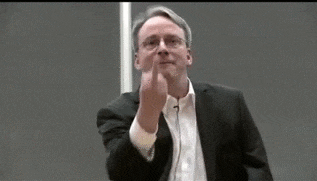
Linux founder Linus Torvalds criticized the hardware of AMD, Intel, and NVIDIA for having “flaws” and expressed skepticism about the hype surrounding the artificial intelligence industry, stating that “90% is marketing, 10% is reality.” He believes that AI will eventually change the world, but currently chooses to ignore it because the industry focuses on marketing rather than substance. Torvalds predicts it may take another five years.
Marketing Hype: Marketing Over Substance
In an era where nearly every company touts its products as “AI-driven,” Torvalds’ skeptical attitude is both refreshing and cautionary. He stated, “I find AI very interesting, and I believe it will change the world, but at the same time, I really hate that hype cycle to the point where I don’t want to get involved in it.”
He believes that most AI products today exist more to attract investment and boost market valuations than to provide genuinely useful solutions for users. Tools like ChatGPT and some graphic design applications showcase some impressive advancements, but they are more like flashy displays rather than practical tools for solving everyday problems.
Choosing to Ignore the Noise
For Torvalds, the best strategy is to temporarily “ignore” the extravagant hype. He believes that in the next five years, when generative AI and machine learning technologies truly mature and are applied in real-world scenarios, we will see which products can genuinely bring about change. Therefore, he chooses to wait until he sees the technology’s true performance in real workloads.
The Reality Behind the Hype
Despite his critical stance on the current AI hype, Torvalds does not completely deny the value of artificial intelligence. He acknowledges that AI is “very interesting” and has the potential to transform various industries. However, many current products are still primarily at the stage of generating impressive demonstrations and are far from being able to replace traditional solutions on a large scale. For example, while ChatGPT and similar services demonstrate strong natural language processing capabilities, they still operate within narrow application domains and often require significant human oversight.
A Call for Genuine Technological Innovation
Torvalds’ viewpoint is not meant to stifle innovation but rather to encourage the tech industry to focus on developing technologies that can genuinely solve real problems, rather than merely chasing marketing gimmicks. He warns that the current AI hype could create a bubble, and inflated market valuations may face severe challenges in the future. Although substantial capital has been invested in the AI field, the actual user returns from it remain very limited.
Looking Ahead: Maturity in Five Years
Perhaps the most optimistic aspect is Torvalds’ prediction that the true potential of artificial intelligence will become apparent in about five years. By then, the market will filter out the flashy marketing gimmicks, and technologies with real value will emerge. Until then, he advises us to remain cautious and wait for the technology to prove itself.
Conclusion
Linus Torvalds’ candid remarks about artificial intelligence serve as both a warning and a guide. While the future of AI is promising, his assessment that “90% is marketing, 10% is reality” reminds us that amidst the hype filled with grandiose language and exaggerated promises, we must look beyond the surface to see the true technological advancements.
What do you think? Has artificial intelligence truly realized its revolutionary promise, or is it merely a marketing show? Feel free to share your thoughts in the comments!
Source: PyTorch Study Group